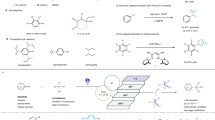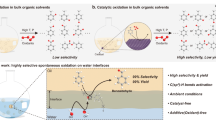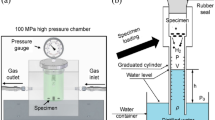Abstract
The pyrolysis of toluene and of the three xylenes has been investigated by a flow method in a silica reaction vessel with a technique permitting the measurement of the rate of the reaction for decompositions ranging from 0.01 per cent up to a few per cent. The reactions were shown to be homogeneous gas reactions of the first order, the first-order constant remaining the same when the time of contact and the pressure of the hydrocarbons were varied.
This is a preview of subscription content, access via your institution
Access options
Subscribe to this journal
Receive 51 print issues and online access
$199.00 per year
only $3.90 per issue
Buy this article
- Purchase on SpringerLink
- Instant access to full article PDF
Prices may be subject to local taxes which are calculated during checkout
Similar content being viewed by others

References
Polanyi and Wigner, Z. Phys, Chem., A, 139, 439 (1928).
Kistiakowsky et al., J. Chem. Phys., 10, 305 (1942); 10, 653 (1942); 11, 6 (1943). Stevenson, J. Chem. Phys., 10, 291 (1942); J. Amer. Chem. Soc., 65, 209 (1943).
Pauling and Wheland, J. Chem. Phys., 1, 362 (1933). Lenard-Jones and Coulson, Trans. Farad. Soc., 35, 811 (1939).
Author information
Authors and Affiliations
Rights and permissions
About this article
Cite this article
SZWARC, M. The C—H Bond Energy in Toluene and Xylenes. Nature 160, 403 (1947). https://doi.org/10.1038/160403a0
Issue Date:
DOI: https://doi.org/10.1038/160403a0
This article is cited by
-
Benzenoid Quinodimethanes
Topics in Current Chemistry (2017)
-
Polymerization of chloro-p-xylylenes, quantum-chemical study
Journal of Molecular Modeling (2017)
-
Para-Quinodimethanes: A Unified Review of the Quinoidal-Versus-Aromatic Competition and its Implications
Topics in Current Chemistry (2017)
-
Frequency Factors in a Series of Similar Unimolecular Reactions
Nature (1951)


